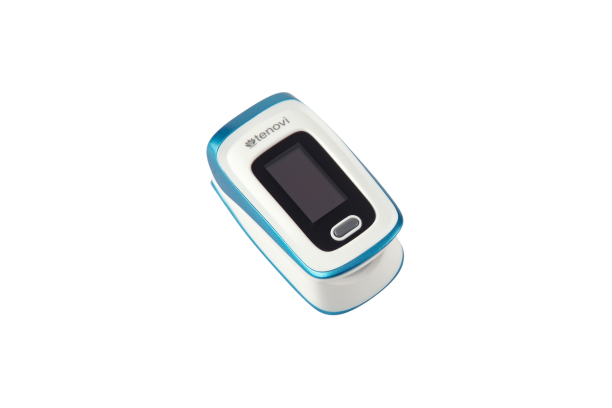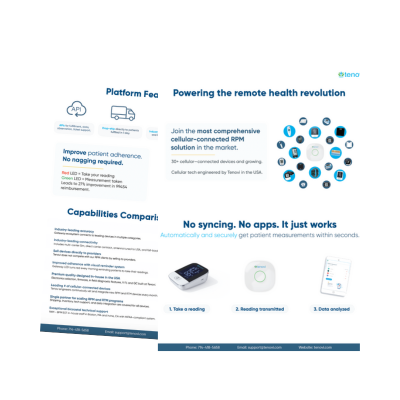Digital pulse oximeters are widely used in clinics, hospitals, home healthcare, and remote patient monitoring. They measure the amount of peripheral oxygen saturation (SpO2) in a patient’s blood. Correct pulse oximeter placement is crucial for accurate readings needed for clinical decision-making. However, patients in home monitoring programs may not always receive guidance on proper placement.
This article explains how to properly place pulse oximetry sensors and probes on patients.
Remote Patient Monitoring with Pulse Oximetry
SpO2 is often called the fifth vital sign. Research shows that pulse oximetry can detect hypoxemia 19 times more often than without it. Traditionally, patients recorded oxygen readings manually for later review during office visits. If health declined between visits, issues could go unnoticed, and problems could be missed.
Remote pulse oximetry monitoring changed this. Now with remote patient monitoring (RPM), patients can use a pulse oximeter that sends real-time data to care providers. This enables closer tracking of SpO2 levels and faster intervention. A recent study found that both patients and clinicians had very positive perceptions of pulse oximeters for COVID-19 monitoring, citing high acceptability and usability.
Understanding Hypoxemia
Adequate blood oxygen is critical for normal body function. Healthy oxygen saturation ranges between 95% and 100%. Readings consistently below 95% should be investigated. A reading at or below 90% indicates low oxygen levels and may signal a serious issue.
Hypoxemia means there is not enough oxygen in the blood. Symptoms include headaches, shortness of breath, rapid heartbeat, and blue-tinted skin. Heart and lung conditions, or high altitudes, can increase the risk. Without treatment, hypoxemia can be life-threatening.
How Digital Pulse Oximeters work
Higher saturation means higher oxygen levels. A digital pulse oximeter uses a sensor with a light-emitting diode (LED) connected by a cable. The LED emits light that interacts differently with oxygenated and deoxygenated hemoglobin molecules. The device calculates oxygen saturation based on these reactions.
Most digital pulse oximeters are designed for the finger. Some people incorrectly place a finger probe on the ear, but this will produce inaccurate readings. Improper placement can lead to missed diagnoses and delays in care. When a standard pulse oximeter is attached to an ear lobe or other body part, research shows it will give inaccurate readings. This can lead to missed opportunities in early diagnosis and urgently needed care.
Specialized oximeter sensors are available for other body parts, including the earlobe, toes, forehead, and nose. Each sensor is designed for a specific site and should not be used interchangeably. For example, a finger sensor should not be placed on an ear or nose.
Proper pulse oximeter placement depends on the device and probe type. Always consult your physician and review the manufacturer’s instructions to ensure correct placement for best accuracy.
Proper Pulse Oximeter Placement
Incorrect placement can distort oximetry readings. Extremes in patient positioning can also affect peripheral perfusion measures and lead to errors. Therefore, proper pulse oximeter placement is important to secure an accurate SpO2 reading. This may sometimes be difficult due to tremors, cold hands, bandages, or artificial nails.
As previously noted, when a finger reading is not possible, a specialized ear probe can be used. Pediatric probes are also made for children under a year old.
Always follow the manufacturer’s instructions for designated site pulse oximeter placement. This video will walk you through proper oximeter placement and show how to take a correct measurement with the Tenovi pulse oximeter. For additional detailed information, please see Tenovi’s pulse oximeter user manual.
Understanding Digital Pulse Oximeter Placement
Remote pulse oximetry is essential for tracking blood oxygen levels at home. However, improper pulse oximeter placement can cause inaccurate readings. Correct placement is crucial for accurate results.
Always follow manufacturer guidelines to select and position the appropriate sensor for the ear, finger, toe, nose, or forehead. Pediatric and alternative probes are available when needed. With proper sensor selection and careful placement, pulse oximetry can reliably monitor a patient’s oxygen status.
Accurate readings allow early detection of hypoxemia and enable timely treatment. Proper pulse oximeter placement plays a key role in protecting patient health by ensuring correct interpretation of oxygen levels.
Looking to offer a better remote patient monitoring experience? Tenovi partners with companies to deliver remote monitoring solutions for healthcare providers. Schedule your free demo and consultation today.


